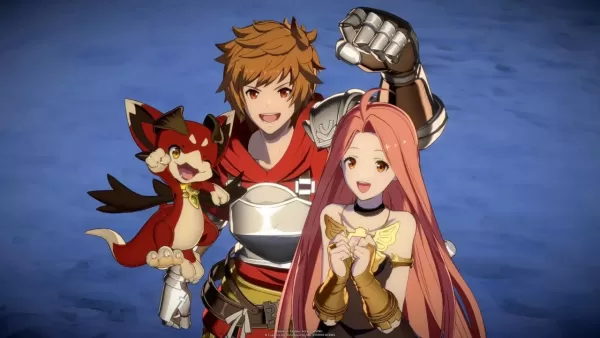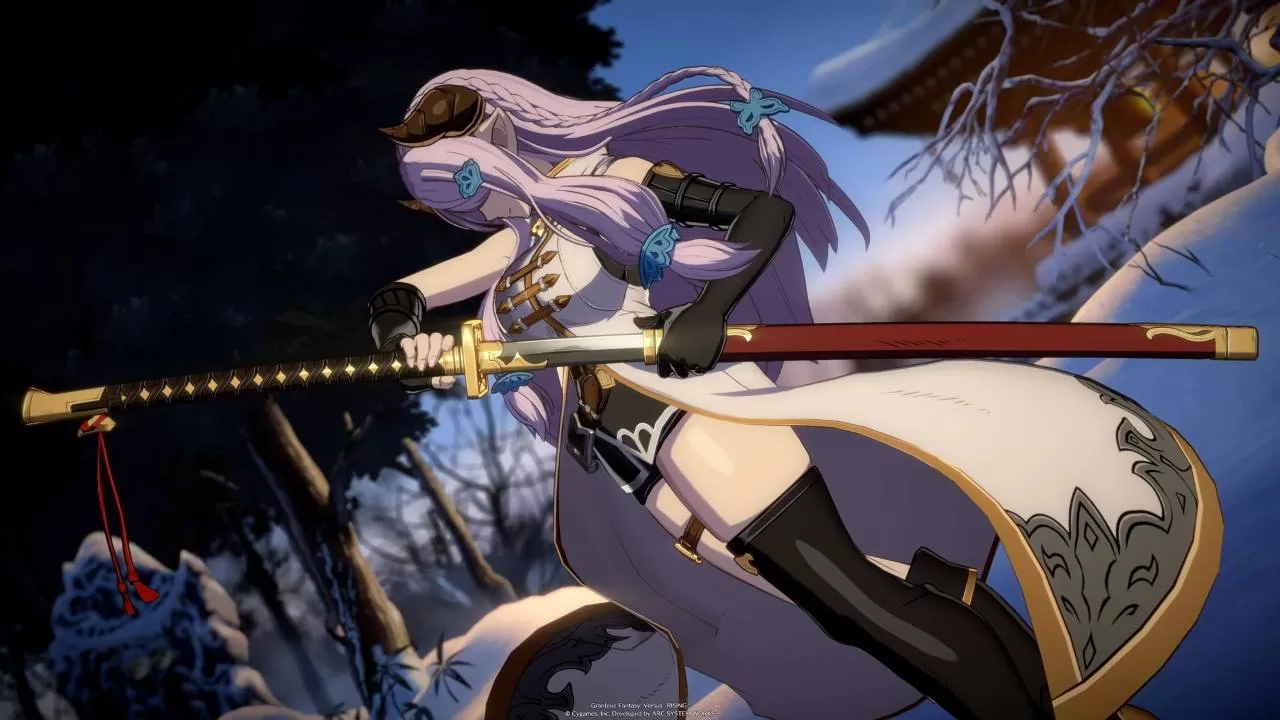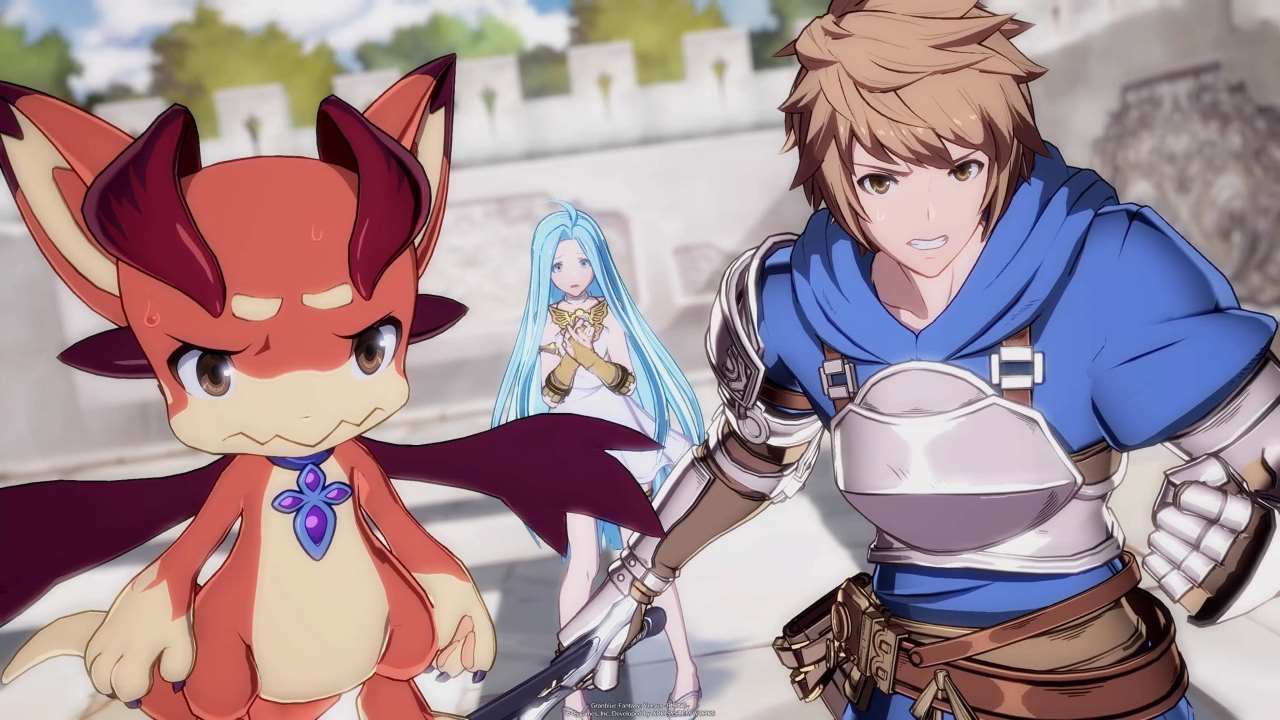Granblue Fantasy Versus: Rising Review | Rising from the ashes
Need a 2D anime fighter fix? Rising is an excellent entry for anyone.

As someone who had never heard of the Granblue IP before getting my hands on this game, I went into it fearing that I wouldn’t be able to appreciate or engage with it as much as I ended up doing so. After dipping into the rabbit hole, a bit more, I soon discovered that Granblue Fantasy does hold its own fair share of dedicated fans that have grown through a mobile game and an anime adaptation. The franchise is commonly seen as Cygames’ most popular work which made the task of creating a Granblue Fantasy Versus: Rising review all the more daunting for a newcomer like me. However, despite releasing in a time where the attention of fighting game fans is divided among Street Fighter, Mortal Kombat, and Tekken, Granblue Fantasy Versus: Rising stands as a worthy contender with a fantastic visual look, intuitive controls, and a number of gameplay elements that I believe other major fighting games should take note of.
Rising stands as both a direct sequel and a repackaging of sorts for 2020’s Granblue Fantasy Versus. While a decent game on its own, the general consensus was that the game had a less-than-stellar online infrastructure. A critical misfire considering how important input accuracy is with this type of game. It’s even worse when you consider that it was back during the COVID-19 lockdowns when most of us just relied on staying connected. Rising’s biggest talk of the show is advertising its new and improved rollback netcode and crossplay support. While 2 amazing fixes on their own, the game is so much more than that. This is more than just a passable 2D fighter. Granblue Fantasy Versus: Rising is an absolute blast to play.
Back to basics

I am by no means a fighting game expert. While I’m no professional, I do have my fair share of experiences duking it out in other titles. The one common thing I always look for with this type of game is how accessible it is. Fighting game fans are always going to be catered to (ideally, at least). The genre is one of the most mechanically demanding for players. But the most dedicated bunch will always be a niche group. A fighting game’s success lies in how well it can draw in a new audience with each new release.
I initially thought that Rising would have trouble with this given that it’s a sequel. I first thought that watching the anime and playing through earlier titles in the IP would be required to understand anything. Luckily, the game makes excellent strides in making sure that newbies are up to speed in both gameplay and narrative sense.
The story of Rising takes place directly after the first game. The best thing about this is that the campaign also features all of the levels that came before. You have the option to either skip to the continuation of the tale or experience how it all began for yourself. This was a lifesaver for me and something that really cemented the game as an ultimate apology package for those who initially played through the flawed first release. While I can’t say that the story itself was amazing for me, I did enjoy some parts of it, mostly when it came to how it features the different personalities of each character and how they interact with one another.

The main problem I had was how it all progresses. You select a level, watch a few dialogue cutscenes, get into a side-scroller/ beat-em-up type gameplay, and then repeat till you reach a boss. It felt like a presentation that lacked cohesion. While great in the moment, it does suffer when experienced as a whole.
However, the opening hours do a good job of easing the player into Rising’s mechanics. It provides a step-by-step guide on the controls and the various attacks/combos you can do. And if you need to do any reviewing or want to get a little bit more in-depth, there is a menu that features all the move sets of each character and even provides tips on how you can use them to their full potential or counter against them in a fight. It’s this type of accessibility in a fighting game that I appreciate the most. Simple enough to get into, deep enough for those who want it to be.
It also goes without saying that the 2D anime visuals of the game are absolutely gorgeous. Character designs are unique from one another and are filled with so much personality. The art style is popping with vibrant colors that make the environments pop out. All of this is tied with some really good animation work, making fights a visual spectacle. Not too noisy to the point it becomes incoherent but also simple enough to appreciate and know what’s going on.
Better fighter

Gameplay-wise, Rising is pretty much a hit for me. There are 28 playable characters at launch, a massive improvement from the original’s 12. And of course, you can expect more to come with DLC. Despite the quantity, I never noticed one fighter feeling too similar to the other. There’s a great sense of diversity here in both aesthetics and gameplay mechanics.
Fights feel smooth and responsive with great visual feedback. However, I did find that backing an opponent into a corner can be a bit too easy if the player is aware of the bravery system. It basically provides 3 points to each one at the start of the round. You can either perform devastating unblockable attacks or brave counters. 2 very powerful moves that can be chained together in a regular combo.
What I do love about Rising’s mechanics is how it prevents special attack spamming. Each character has a moba-style cooldown for their unique attacks, preventing the oppressive overuse of it during fights. This is a common problem that I see even the most established fighting games take years to fix and here is a simple and effective way to do so. It makes performing the special attacks much more relevant to your input investment. You have to think about when you’ll use them, and how much time it takes before you can do so again. I even noticed that it made me a more conscious player rather than the usual button-smashing I would do in other titles.

In terms of online play, while I can’t say how much it compares to the first game, I can report that I experienced far fewer issues than what I saw was being reported back then. While I did play this on a pre-release window, which majorly lessens the number of people I can effectively connect with, there wasn’t anything too bad to the point that matches were unplayable. The real server test is when the game finally comes out to the public.
There are a few minigames here that break the gameplay apart from the usual fight matches. There is a pseudo-Fall Guys mode that is pretty much self-explanatory. It’s here, and it’s great, I spent more than enough time with it than I care to admit. There is also an online social hub where you can interact with other players aside from punching and kicking them in the face. Here, you can also select what server you’d want to connect to, which is always a nice touch.
The one major drawback I have with the online experience is how much it is required if you want to unlock most of the cosmetics for the characters. If you’re the type who prefers to play online, you’ll only gain access to a very small portion of unlockable items. A real bummer.
Granblue Fantasy Versus: Rising Review Final Verdict – 8/10

Should you go out right now and get Granblue Fantasy Versus: Rising? The art style alone makes the whole thing worth checking out for me. Every enjoyment I had from the gameplay was really just the cherry on top. You could tell that the developers really took to heart a lot of what was criticized back in the first game. This is an excellent sequel from top to bottom.
For fighting game enthusiasts, this is an IP that’s not as big as the ones I know you’re used to and are probably waiting on as well. But Rising is filled with so many distinct personalities and systematic fixes that I can’t help but recommend it. As someone who doesn’t really spend a lot of time with this genre, Rising gave me a great experience with the time I invested in it. Whether it has strong enough legs to sustain itself with future support remains to be seen. But for now, Granblue Fantasy Versus: Rising is an excellent time to be had.
This review was made using a game code for the PS5 provided by the publisher.

